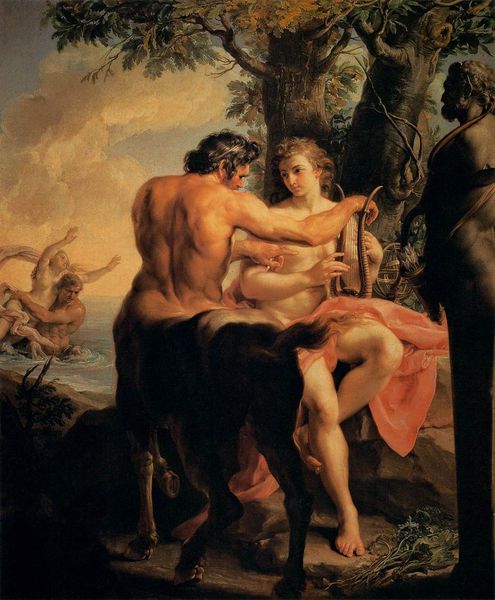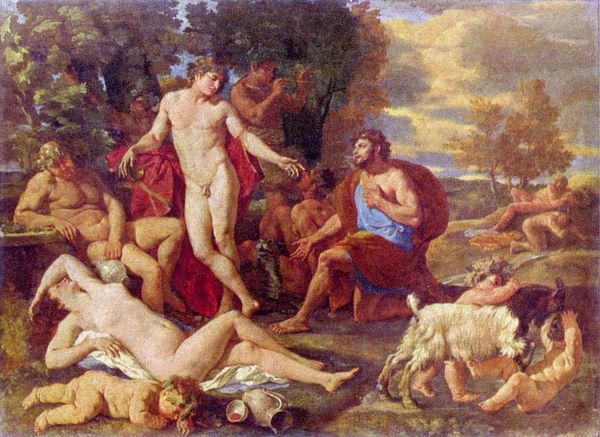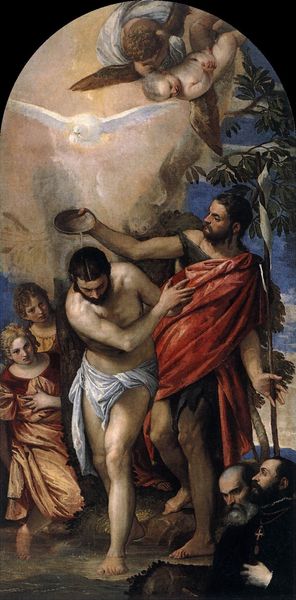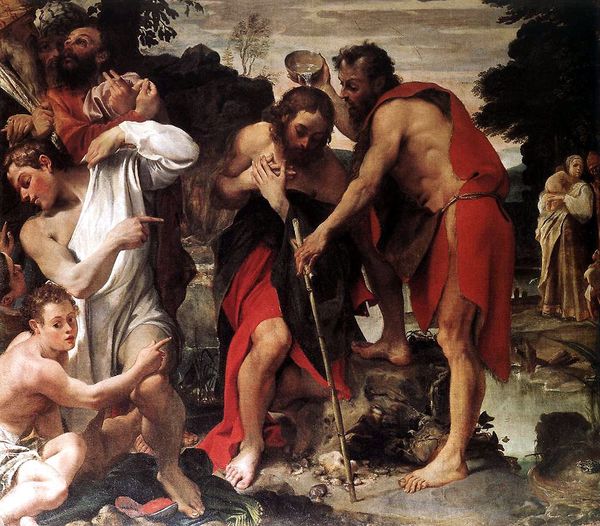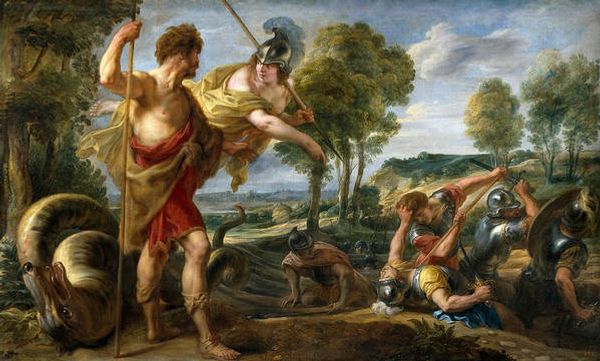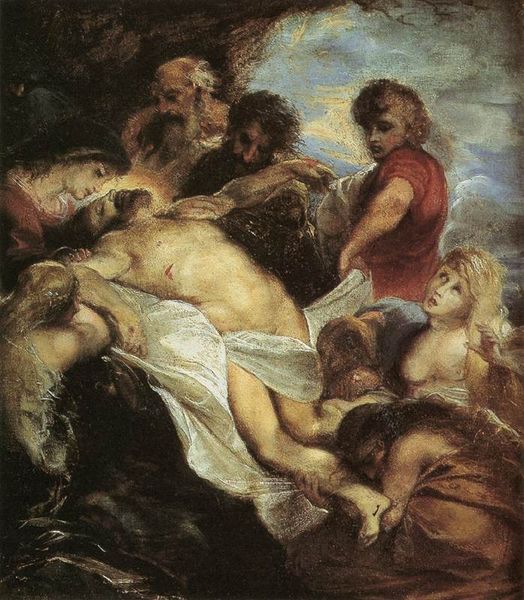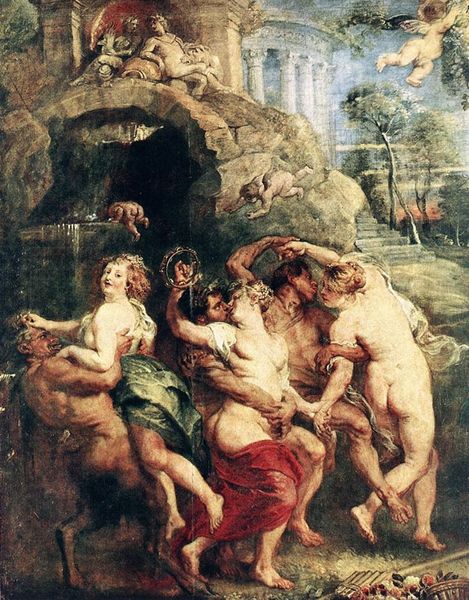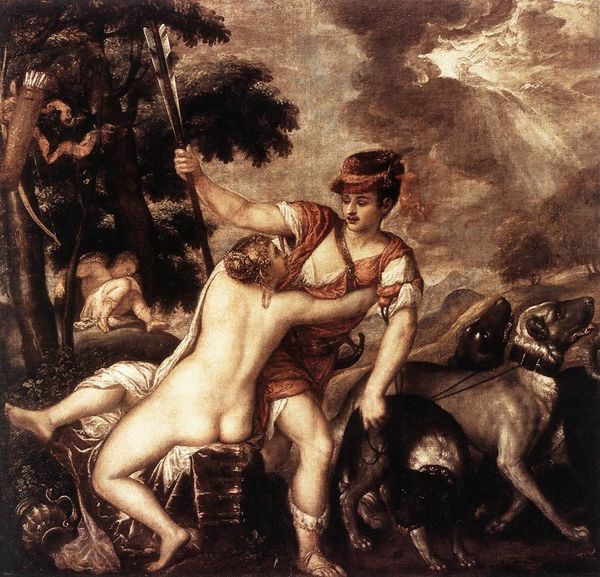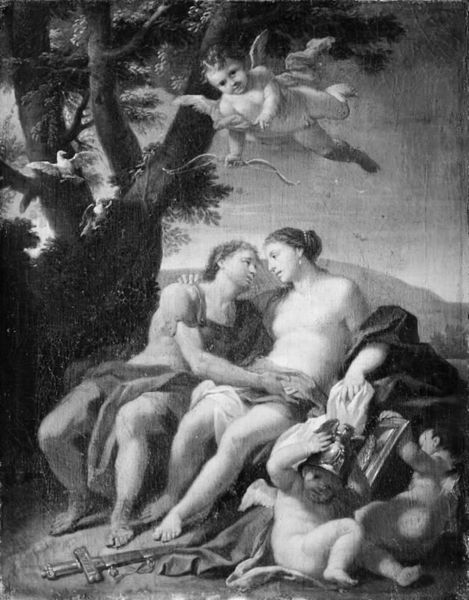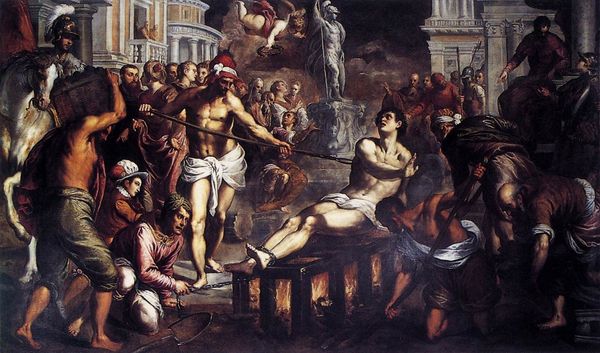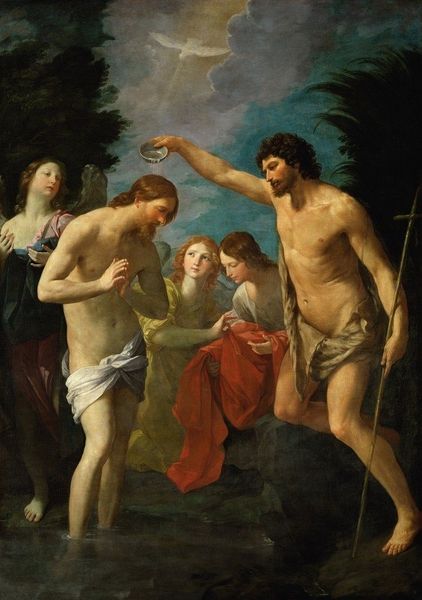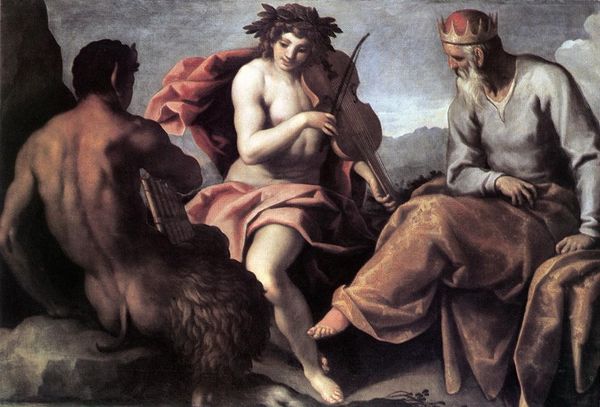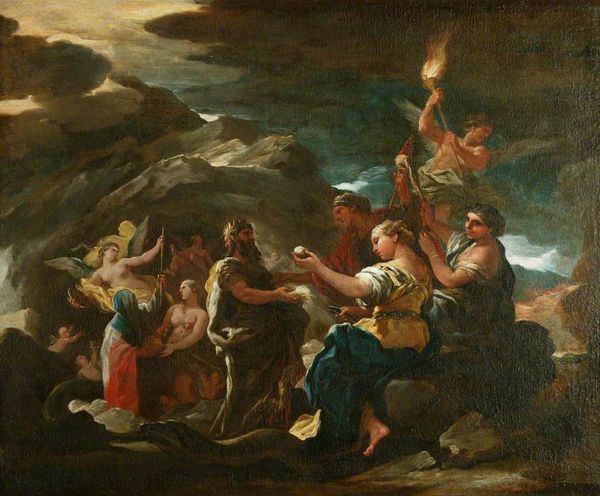
painting, oil-paint
#
allegory
#
baroque
#
painting
#
oil-paint
#
landscape
#
classical-realism
#
figuration
#
oil painting
#
mythology
#
history-painting
Copyright: Public domain
Nicolas Poussin painted "Shepherds of Arcadia," an oil on canvas, sometime in the 17th century. Poussin worked during a period of political and religious upheaval, marked by the Thirty Years' War and conflicts between Catholics and Protestants, which influenced his artistic style. This painting depicts shepherds gathered around a tomb, deciphering an inscription that reads "Et in Arcadia ego," typically translated as "Even in Arcadia, there am I." Arcadia, idealized in the Renaissance as a pastoral utopia, contrasts starkly with the presence of death. The figures, rendered in classical poses, convey a sense of solemnity as they confront mortality. The painting engages with themes of memory, loss, and the human condition. How can the acknowledgement of death and decay serve as a means to recognize the value and fragility of life? It urges us to reflect on our own mortality. It's a moment of realization, a quiet acknowledgment of death, even in the most beautiful of settings.
Comments
No comments
Be the first to comment and join the conversation on the ultimate creative platform.
